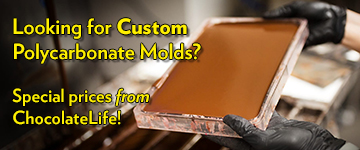There is a huge amount of science on these topics that inform the engineering of tempering machines, especially "continuous" machines.
The basic idea is to:
- Get the chocolate hot enough to melt out any crystals.
- Cool the chocolate down to force the formation of a certain percentage of Form V (five) crystals so that when the chocolate cools the "seed" crystals force the formation of Form V crystals as the dominant type to get a nice sheen, snap, and stability.
In a screw-type continuous tempering machine (for example) any crystals in the chocolate is are melted out by the time the chocolate reaches the bottom of the bowl. The chocolate is then pumped through a cooled pipe. The crystals are formed on the inner surface of the pipe and scraped off and mixed by the auger/screw. By the time the chocolate exits the top of the pipe it's in temper. Any chocolate that is not used goes back into the bowl where the crystals get melted out. It is necessary to match the length and temperature of the pipe with the flow of the chocolate to make sure that enough of the right crystals are formed and mixed properly. I know that on some FBM machines there is a "hard" and a "soft" temper setting that can be selected based on the type of chocolate. Some chocolates can be cooled faster than others (it depends on rheology/fat content). With those chocolates the "hard" temper setting is chosen and this runs the cooling system more aggressively.
With many batch tempering systems seed chocolate that is already properly tempered is required to force the proper crystal structure as the chocolate cools down. In these systems you can run them as hard as you like, but you need to pay close attention to make sure you're not over-crystallizing. Semi-automatic machines (such as Chocovision) have sensors and microprocessors that have time/temp curves built in. Manual systems (e.g., JKV, Hilliard) require that you control the temperatures manually, so you have to know how to temper to use them effectively.
Manual tempering (e.g., using a melter) or assisted-manual tempering (Chocolate Wave) require that you know how to temper and what temper looks like. The process is to create seed chocolate and add it to melted chocolate and then find an equilibrium temperature where crystals are not melted out or do not form too quickly. How long the process takes is up to the skill of the person doing the tempering.
Ideally, what you're looking to do is get into temper as quickly as possible and spend as little time as possible to maintain temper. You can't apply so much heat that you scorch the chocolate (or cause it to separate) and you don't want to cool it so quickly that you can't control the speed of crystallization and the chocolate over-crystallizes.
No matter what the approach, from my experience it is having precise control over temperature that is important, followed by reaction time. For example, if you're using a system that requires cold water for cooling you need to make sure that the temperature of the water is consistent. If you need more cooling, it might be hard to lower the water temperature quickly - or warm it back up. If you are recirculating refrigerant gas, the reaction time is much faster, and you can use resistance wiring to warm things up quickly.
If you're working by hand, controlling the envionmental ambient temperature and humidity are one key to consistent tempering. You also want warming vessels that are preceisely calibrated and can maintain a consistent temperature. With manual (or assisted-manual) tempering it's also about tempering the right amount of chocolate for your production needs.
--
~~~~~~~~~~~~~~~~~~~~~~~~~~~~~~~~~~~~~~~~~~~~~~
@DiscoverChoc

